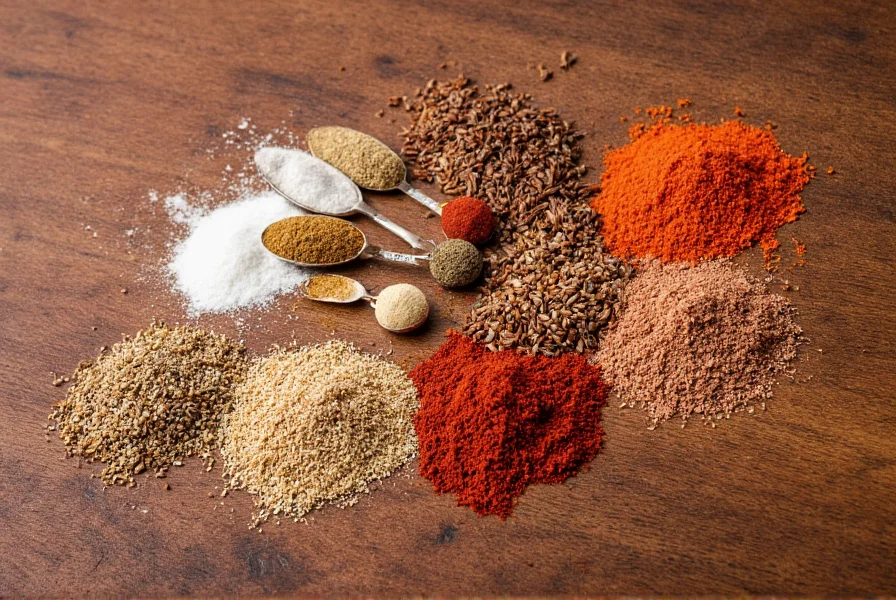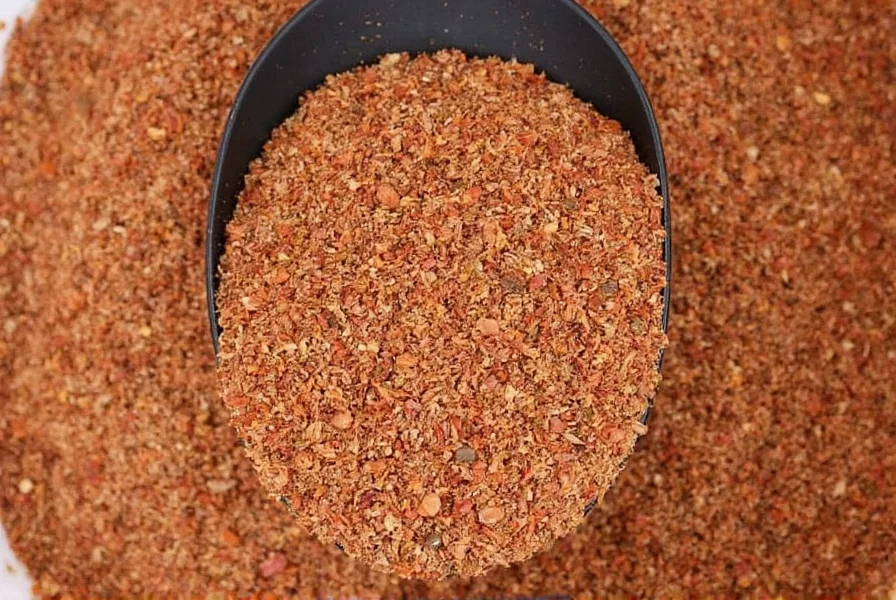The simplest homemade chili seasoning recipe combines 2 tablespoons chili powder, 1 tablespoon cumin, 2 teaspoons garlic powder, 2 teaspoons onion powder, 1 teaspoon paprika, 1 teaspoon oregano, 1/2 teaspoon red pepper flakes, and 1 teaspoon salt. Mix all ingredients thoroughly in a small bowl, store in an airtight container, and use within 6 months for best flavor.
Creating your own chili seasoning blend is simpler than most home cooks realize and offers significant advantages over store-bought versions. When you make chili seasoning from scratch, you control the quality of ingredients, avoid unnecessary additives and preservatives, and can customize the heat level and flavor profile to match your personal preferences. This guide provides everything you need to know about crafting the perfect homemade chili seasoning that will elevate your dishes with authentic, vibrant flavors.
Understanding Chili Seasoning Components
Before diving into the recipe, it's important to understand what makes a great chili seasoning blend. Authentic chili seasoning isn't just about heat—it's a balanced symphony of flavors that includes earthy, sweet, smoky, and spicy elements. Each component plays a specific role in creating that distinctive flavor profile that makes chili dishes so satisfying.
Essential Ingredients and Their Roles
While regional variations exist, most chili seasoning blends share these core components:
| Ingredient | Flavor Profile | Function in Blend |
|---|---|---|
| Chili Powder | Earthy, slightly sweet, moderate heat | Base flavor and primary color |
| Ground Cumin | Earthy, warm, slightly smoky | Provides depth and authentic Southwestern flavor |
| Garlic Powder | Pungent, savory | Enhances overall flavor complexity |
| Onion Powder | Sweet, savory | Complements garlic and adds sweetness |
| Paprika | Sweet, mild pepper flavor | Boosts color and adds subtle sweetness |
| Dried Oregano | Herbaceous, slightly bitter | Traditional element in authentic blends |
Basic Homemade Chili Seasoning Recipe
This versatile recipe creates approximately 1/4 cup of seasoning—enough for one batch of chili or to season 1-2 pounds of meat.
Ingredients
- 2 tablespoons chili powder (use ancho chili powder for deeper flavor)
- 1 tablespoon ground cumin
- 2 teaspoons garlic powder
- 2 teaspoons onion powder
- 1 teaspoon paprika (sweet or smoked)
- 1 teaspoon dried oregano
- 1/2 teaspoon red pepper flakes (adjust to taste)
- 1 teaspoon fine sea salt
- 1/2 teaspoon black pepper
Instructions
- Gather all ingredients and ensure your spices are fresh (less than 6 months old for best flavor)
- In a small bowl, combine all ingredients thoroughly
- Use a whisk or fork to break up any clumps and ensure even distribution
- Taste a tiny amount (carefully—it's concentrated!) and adjust seasonings as needed
- Transfer to an airtight container for storage

Customizing Your Chili Seasoning Blend
One of the greatest advantages of making your own chili seasoning is the ability to customize it to your exact preferences. Here are popular variations to consider when learning how to make chili seasoning that perfectly matches your taste:
Mild Version for Sensitive Palates
Omit red pepper flakes entirely and consider reducing the chili powder to 1.5 tablespoons, replacing the difference with additional paprika. This creates a family-friendly blend that still delivers authentic flavor without the heat.
Spicy Texas-Style Blend
Add 1 teaspoon cayenne pepper and replace regular chili powder with a hotter variety like chipotle powder. Texas-style chili often features more heat and less sweetness, so you might also reduce or eliminate the paprika.
Smoky Colorado Variation
Substitute regular paprika with smoked paprika and add 1/4 teaspoon ground chipotle powder. Colorado-style chili emphasizes the rich, deep flavor of dried red chilies, so you might increase the chili powder to 2.5 tablespoons.
Proper Storage Techniques
When you make chili seasoning at home, proper storage is crucial for maintaining flavor. Follow these guidelines:
- Store in an airtight glass container away from light and heat
- Keep in a cool, dark cupboard (not above the stove where heat fluctuates)
- Use within 6 months for optimal flavor (though it remains safe indefinitely)
- Never store in the refrigerator where moisture can degrade quality
- Consider making smaller batches more frequently for best results
Troubleshooting Common Issues
Even when following a simple recipe for how to make chili seasoning, you might encounter these common problems:
Seasoning Tastes Bland
If your homemade chili seasoning lacks depth, it's likely due to stale spices. Most ground spices lose potency after 6 months. Always check expiration dates and consider toasting whole spices before grinding for maximum flavor.
Too Much Heat
If your blend turns out spicier than expected, balance it by adding more cumin and paprika. These earthy, sweet components help counteract excessive heat without diluting the overall flavor profile.
Seasoning Clumping
Moisture is the enemy of spice blends. If your chili seasoning develops clumps, it's likely been exposed to humidity. Add a silica gel packet to your container or make smaller batches more frequently.
Using Your Homemade Chili Seasoning
For best results when using your DIY chili seasoning mix:
- Bloom the spices in oil before adding liquids to release maximum flavor
- Use 2-3 tablespoons per pound of meat for chili or taco filling
- Add early in the cooking process to allow flavors to meld
- Reserve a small amount to sprinkle on finished dishes as garnish
- Experiment with using it on roasted vegetables or in cornbread
Why Homemade Beats Store-Bought
When you make chili seasoning from scratch, you avoid the fillers, anti-caking agents, and preservatives common in commercial blends. Most store-bought versions contain ingredients like maltodextrin, silicon dioxide, and unnecessary salt levels. Creating your own blend ensures you know exactly what's going into your food while delivering superior flavor that transforms ordinary meals into extraordinary culinary experiences.
Frequently Asked Questions
How long does homemade chili seasoning last?
Properly stored in an airtight container away from light and heat, homemade chili seasoning maintains optimal flavor for 6 months. While it remains safe indefinitely, the flavor compounds begin to degrade after this point. For best results, make smaller batches more frequently and check your spices' freshness before creating new blends.
Can I substitute fresh spices for dried in chili seasoning?
Fresh spices don't work well in dry seasoning blends as they introduce moisture that can cause spoilage. The standard conversion is 1 teaspoon dried herbs equals 1 tablespoon fresh, but for dry spice blends like chili seasoning, always use dried, ground spices for proper texture, shelf stability, and concentrated flavor.
What's the difference between chili powder and chili seasoning?
Chili powder is typically a single-ingredient product made from ground dried chilies, while chili seasoning is a complete spice blend containing chili powder plus other spices like cumin, garlic, and oregano. When learning how to make chili seasoning, remember that chili powder serves as the base ingredient in the seasoning blend.
How can I make my chili seasoning more authentic?
For more authentic flavor when making chili seasoning, toast whole cumin seeds and dried chilies before grinding them yourself. Traditional blends often feature specific regional chilies like ancho, guajillo, or New Mexico varieties. Adding a small amount of unsweetened cocoa powder can also create the depth found in some authentic Mexican preparations.
Can I make chili seasoning without salt?
Yes, you can easily make salt-free chili seasoning by omitting the salt from the recipe. This is ideal for those monitoring sodium intake. Simply add salt to your dishes separately during cooking to control the amount. The seasoning blend will still deliver robust flavor without the salt component.











 浙公网安备
33010002000092号
浙公网安备
33010002000092号 浙B2-20120091-4
浙B2-20120091-4